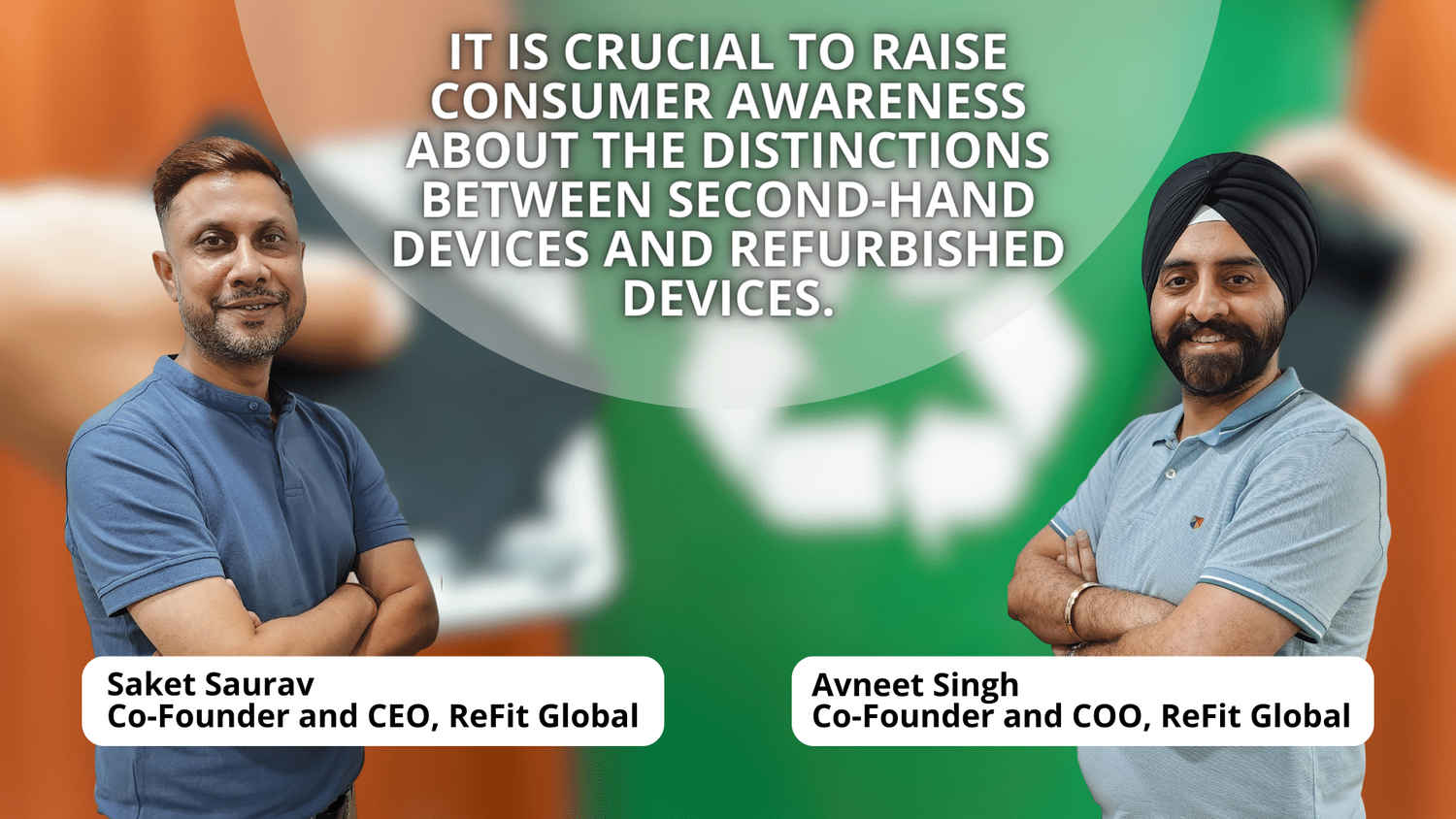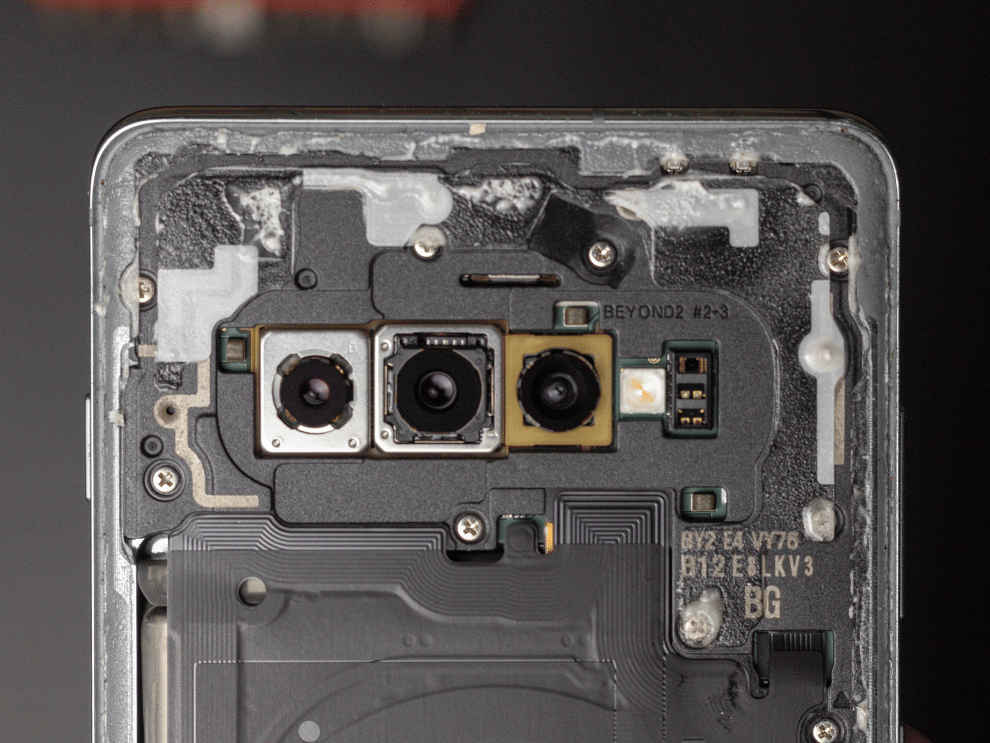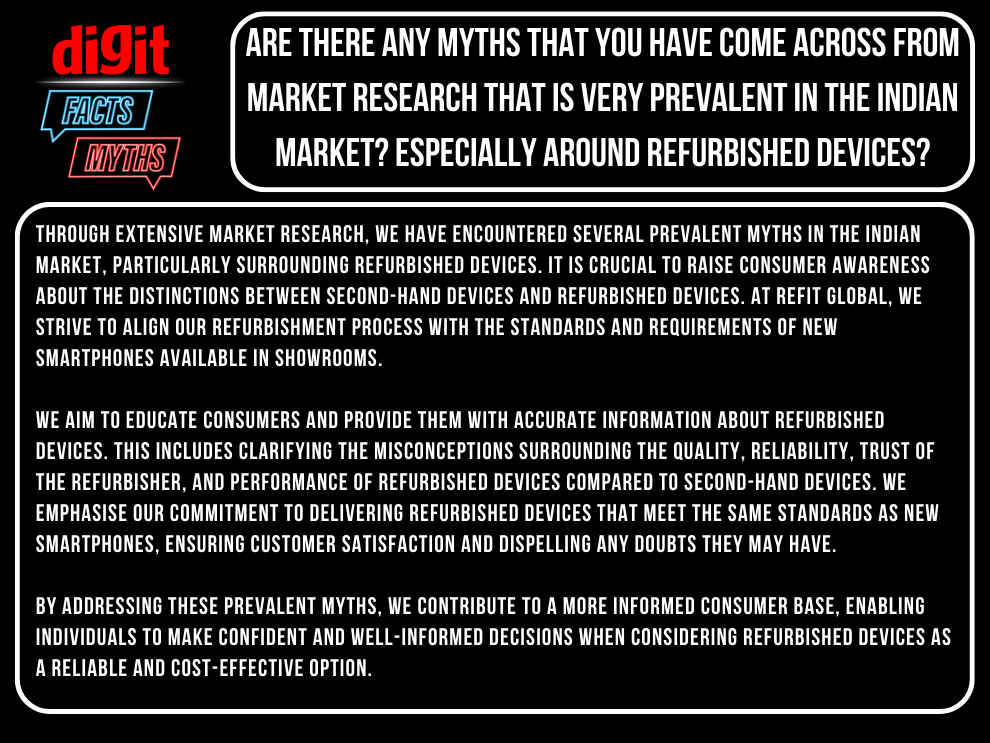ReFit Global on India’s gadget refurbishment market – Myths, Insights, and more!

Refurbished gadgets are the way to for individuals trying to get their hands on the best gadgets out there without breaking the bank. While the concept of buying refurbished gadgets was alien to the Indian masses, in the last few years, it has caught on. Major e-commerce players like Flipkart and Amazon have started selling refurbished gadgets and there are dedicated platforms like Cashify that have also consolidated their share of the market.
 Survey
SurveyBut the real workhorses in this space are corporations that actually do the refurbishment. So, I spoke to Mr Saket Saurav, Co-Founder and CEO and Mr Avneet Singh, Co-Founder and COO at ReFit Global, the brand that is working with refurbished gadgets in close proximity with some of the best of the best in the Indian market. They shared some really interesting insights about the Indian refurbished consumer electronics market, especially smartphones and also busted some myths about refurbished gadgets. Here’s a glimpse at my conversation –
With the changing patterns in buying behaviour of Indian consumers, what change, in terms of demand, has ReFit Global seen in recent years?
In recent years, ReFit Global has observed a significant change in demand, driven by shifting buying behaviour among Indian consumers. This change has been particularly noticeable during and after the COVID-19 pandemic. There has been a remarkable surge in smartphone usage and purchases, prompting brands to establish a robust online presence to cater to evolving consumer preferences.
One notable change in demand has been observed in the price range preferred by consumers. Over the past few years, smartphones priced between INR 8,000 – 12,000 have experienced a surge in popularity. In contrast, three years ago, many brands were launching phones in the range of INR 7,000 to 12,000. For the past 3 years, prominent brands such as Samsung, Xiaomi, Oppo and Vivo have also started launching phones in the range of INR 18,000 plus.
The refurbished market has witnessed an increase in demand due to these changing consumer preferences. Users now have the opportunity to acquire high-end smartphones originally priced at INR 30,000 for approximately INR 15,000 – 18,000 in the refurbished market. This shift in demand indicates a growing recognition of the value and affordability offered by refurbished devices.
As ReFit Global continues to monitor the changing patterns in Indian consumers' buying behaviour, they are adapting their strategies to meet the evolving demand. By understanding the demand for smartphones within specific price ranges and recognising the increased interest in refurbished devices, ReFit Global is well-positioned to cater to the preferences of Indian consumers effectively.
Also Read: Gen Z looks at likes and positive reviews before buying gadgets, says Accenture
What budget category of smartphones is in demand the most? Also, are there any specific brands or types that people are going for?
In terms of demand, there are distinct preferences among Indian consumers based on their location and budget. In metro cities, there is a higher demand for smartphones in the higher average selling price (ASP) range, particularly brands like OnePlus and Apple, with prices ranging from INR 12,000 to 18,000 in the refurbished segment. However, in tier 2 and tier 3 cities, there is a significant demand for smartphones in the price range of INR 7,000 to 8,000. This price point accounts for approximately 60% of total sales, encompassing both metro and tier 2 & 3 cities.
Specific brands that people are gravitating towards in the refurbished segment are OnePlus, Apple, and select models from Oppo and Vivo. In terms of volume, ReFit Global observes a higher contribution from mid-range Samsung phones, as well as devices from Oppo, Vivo, and Xiaomi. Xiaomi, and Samsung in particular, accounts for approximately 60% of the total sales volume.
These preferences highlight the varying consumer choices based on budget and location, with a notable demand for premium brands in metro areas and a focus on affordable options in tier 2 and tier 3 cities. ReFit Global takes these factors into consideration to effectively meet the diverse demands of Indian consumers across different budget categories and locations.
Can you shed some light on the process of refurbishment that a device goes through and what makes it different from a regular overhaul that a local technician could also do?
The process of refurbishment that a device undergoes at ReFit Global is carefully designed to differentiate it from a regular overhaul that a local technician might perform. It is crucial to educate consumers about the distinction between refurbished devices and second-hand devices, as the latter may be sold without addressing any technical issues that arise after purchase.
When a phone reaches our warehouse in the refurbished segment, we initiate a thorough evaluation process. Our diagnostic app conducts a comprehensive assessment of the device, consisting of 40 checkpoints. This enables us to identify any technical glitches or problems present in the phone.
To ensure optimal conditions for refurbishment, we meticulously monitor the temperature and moisture levels within the warehouse. We also verify the proper functioning of all machinery and maintain voltage levels in accordance with the requirements of the equipment. This attention to detail helps create an ideal environment for the refurbishment process.
Once the assigned engineer reviews the device and approves it for repair, the diagnostic app is rerun to confirm that all identified issues have been successfully resolved. This step ensures that the device undergoes thorough troubleshooting and that all necessary repairs are carried out effectively.
By emphasising our rigorous refurbishment process, ReFit Global aims to raise consumer awareness regarding the significant differences between refurbished devices and second-hand devices. Our commitment to addressing technical glitches and providing quality assurance sets refurbished devices apart, instilling confidence in customers who choose to purchase these devices.
Apart from smartphones, what other categories of gadgets does ReFit Global work with?
In addition to smartphones, ReFit Global also deals with other categories of gadgets, such as large appliances and laptops. However, it is important to note that our involvement in these categories is slightly different. Instead of performing end-to-end refurbishment, we primarily focus on inventory segregation. After carefully sorting the inventory, we then distribute and sell these gadgets in the offline market. This allows us to extend our expertise beyond smartphones while still ensuring the quality and reliability of the devices we offer.
A percentage of the devices that are being worked on by ReFit would also be iPhones. How difficult is it to work with iPhones for ReFit as a brand, and from where do they source the parts? Is ReFit a part of the Apple Self-Service Repair program?
ReFit, as a brand, encounters a certain percentage of iPhones among the devices they handle. Working with iPhones poses no significant difficulty for ReFit, thanks to the team of specialised engineers who possess extensive experience in repairing Apple devices. Some of these engineers have even acquired prior experience working in the repair departments of Apple and other prominent phone brands. ReFit ensures that their engineers are equipped with the necessary software and applications essential for the repair process.
Regarding the sourcing of parts, ReFit directly obtains them from both Indian and Chinese suppliers and local markets. The company adhere to the specific guidelines provided by the respective brands to ensure that only brand approved spare parts supported by these devices are utilised in the repair process. This ensures the quality and compatibility of the replaced components.
While ReFit maintains contacts with Apple Service for sourcing spare products, if required. But, it should be noted that ReFit is not affiliated with the Apple Self-Service Repair program.
With novelty devices like foldable smartphones entering the mainstream, what changes does ReFit need to bring in terms of training and process when working with such devices?
With the emergence of foldable smartphones in the mainstream market, ReFit acknowledges the presence of these novelty devices. However, it should be noted that the current inflow of foldable devices to ReFit constitutes less than 0.5% of their overall inventory. While some brands have introduced foldable devices, the volume of such devices received by ReFit remains relatively minimal.
Based on industry surveys, the demand for foldable devices is not expected to experience significant growth in the next few years. Therefore, ReFit does not anticipate a substantial increase in the influx of these devices. Foldable smartphones tend to be more of a style statement rather than being driven by practical utility. These devices require careful handling and are less durable compared to traditional smartphones. Given their fragility, ReFit understands the need for cautious treatment and acknowledges that these devices cannot withstand rough handling.
Nevertheless, if foldable devices become a more significant portion, the company is well-prepared. They have expert engineers who specialise in repairing such devices, possess the necessary equipment and tools, and have developed efficient processes to handle foldable phones with care.
However, it is worth mentioning that unless durable foldable devices enter the market, the current situation is not a significant concern for ReFit.
Lastly, what are some of the trends of the future, especially in the refurbishing business and consumer electronics market, does ReFit see becoming a reality?
From ReFit's perspective, several trends are expected to shape the future of the refurbishing business and the consumer electronics market:
Increased Demand for Refurbished Devices: As consumers become more conscious of their environmental impact and seek cost-effective alternatives, the demand for refurbished devices is expected to rise. ReFit anticipates a surge in demand for refurbished smartphones, tablets, laptops, and other consumer electronics as consumers recognize the value and quality of these products.
Increase in competitors: From a competitive standpoint, the re-commerce industry will become increasingly competitive in the future. This is due to Increased Market Size, Increased demand, Technological advancements, and Increased acceptance and trust.
Integration of AI: ReFit envisions the integration of AI in the refurbishing process. AI algorithms can assist in diagnostics, quality control, and predictive maintenance, enabling more efficient and accurate repairs. ReFit keeps a close eye on advancements in AI technology to stay at the forefront of industry trends.
Satvik Pandey
Satvik Pandey, is a self-professed Steve Jobs (not Apple) fanboy, a science & tech writer, and a sports addict. At Digit, he works as a Deputy Features Editor, and manages the daily functioning of the magazine. He also reviews audio-products (speakers, headphones, soundbars, etc.), smartwatches, projectors, and everything else that he can get his hands on. A media and communications graduate, Satvik is also an avid shutterbug, and when he's not working or gaming, he can be found fiddling with any camera he can get his hands on and helping produce videos – which means he spends an awful amount of time in our studio. His game of choice is Counter-Strike, and he's still attempting to turn pro. He can talk your ear off about the game, and we'd strongly advise you to steer clear of the topic unless you too are a CS junkie. View Full Profile

